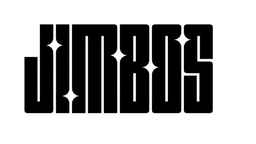The Ultimate Guide to an Engine Detail
Want to know how to safely and effectively clean your engine bay? Let’s dive into the ultimate step-by-step engine detail guide!
Why Detail Your Engine Bay?
Keeping your engine bay clean isn’t just about looks — it helps prevent buildup of grime that can lead to corrosion, overheating, and electrical issues.
A well-detailed engine also makes it easier to spot potential leaks and problems early.
But — you have to do it safely. Let’s walk through it step by step.
What You’ll Need
- The Super Soaper – for pre-soak and foam
- Battery-powered or pump sprayer
- Foam cannon + pressure washer
- Assorted detailing brushes
- Ryobi blower (or similar)
- All Dressed Up diluted 4:1 – for dressing
Step 1: Pre-Soak
Start by using 2 ounces of The Super Soaper mixed in your pump sprayer.
Lightly mist the engine bay to break down surface grime.
👉 No need to bag off the alternator — just be careful around sensitive electrical components.
Step 2: Foam the Engine Bay
Next, foam the engine using 4 ounces of The Super Soaper in your foam cannon.
Cover everything evenly and let the foam dwell for 5–10 minutes.
Step 3: Agitate with Brushes
Use a variety of brushes to safely agitate stubborn dirt and grime — paying attention to plastic covers, around the battery, and between engine components.
✅ Don’t forget hinges, latches, and the underside of the hood!
Step 4: Rinse Safely
Using your pressure washer or hose (set to a low pressure), rinse the engine bay thoroughly.
👉 Key tip: avoid prolonged spraying directly at electrical components.
Step 5: Dry the Engine Bay
Use a Ryobi blower or compressed air to blow out excess water and speed up the drying process.
✅ Make sure all water is removed from tight spots to prevent corrosion.
Step 6: Dress for a Factory Finish
Apply All Dressed Up (diluted 4:1) to all plastic and rubber components.
This gives you a clean, protected, matte OEM finish — without greasy shine.
Step 7: Start Your Engine
Always start your engine after detailing to ensure everything runs properly and to help evaporate any remaining moisture.
Pro Tips for Engine Detailing
- 🛠️ Never soak electrical connections
- 🛠️ Don’t use overly harsh degreasers — they can damage plastics and rubber
- 🛠️ Keep your engine bay maintained with regular quick cleans
- 🛠️ Use All Dressed Up every few months to keep plastics protected
Final Thoughts
With the right method and products, detailing your engine bay is simple — and makes a huge difference in the overall look and maintenance of your car.
👉 Here’s your engine detail starter kit:
- The Super Soaper – pre-soak and foam
- All Dressed Up – dressing and protection
Give it a try — your engine will look factory fresh!



